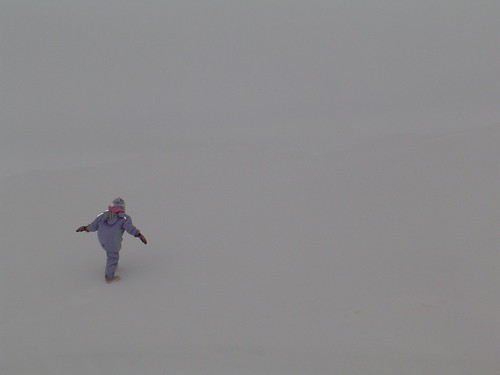
It's goose hunting time in Atqasuk. For the last couple of weeks, snow machines have been buzzing past my house, rifles secured to the front or strapped onto the drivers' backs. This is a much anticipated time of year. After a long winter of confined inactivity, spring subsistence hunting is an opportunity to get out and reconnect with culture and kin. Children in Atqasuk look forward to goose hunting with their parents the way that those in the Lower 48 might anticipate going to a fair or on vacation with their family.
A few days ago, one of my summer school students excitedly related the experience of hunting with his dad. His newly tanned face was absolutely brimming with pride. After trading information and plenty of opinions with classmates about the best rifle and amunition for hunting geese, the ten-year-old went on to describe an accident that they'd had on the snow machine. He had been riding on the back of the snow machine while his father drove. At some point, they hit a drift at the wrong angle and the machine flipped over sideways.
I instinctively began scanning the boy for cuts or bruises. He had only one cut where his rifle had hit his head in the fall. Nothing serious. I asked him why he thought they had turned over. He considered the question, shrugged his shoulders and said, "Snow blind, I guess." I knew what he meant. We'd just received a fresh covering of snow a day or two earlier. All traces of exposed earth were hidden again. But, more importantly, the cloud cover this time of year often diffuses sunlight in such a way that the sky seems to meld with the ground. There are no shadows, no edges. All of the contours that define the terrain have been softened by snow or blurred by uniformly distributed light, making depth perception a real challenge.
When I took this photo of my little neighbor (above), I was having a hard time seeing the snow pile behind my house with that backdrop of gray-white sky. At first, I thought the mountain of snow had actually been removed (they do that this time of year). But, as I walked closer, my eyes adjusted and I was able to make out the faint ridge line along the top of the pile. I've noticed, on days like these, that I walk more slowly, head down, trying to bring the ground directly ahead of me into focus before I step.
It seems a bit ironic that, after months of darkness, an increase in sunlight would actually make it more difficult to see. Webster's defines snow blindness as..."inflammation and photophobia caused by exposure of the eyes to ultraviolet rays reflected from snow or ice." So I'm not sure that snow blindness is exactly what is being experienced in this case, but regardless of the label (or lack of one) this phenomenon definitely presents a challenge for those who attempt to travel across the tundra, even at moderate speeds.
The next two photos further illustrate the effect I've described. My neighbor is sitting on the snow pile with the sky and the tundra in the background. It's very difficult to see the horizon or judge distances.

When I zoom out a little, the science station (about a quarter of a mile away) provides a point of reference making the ground much easier to discern. But it's still tricky.
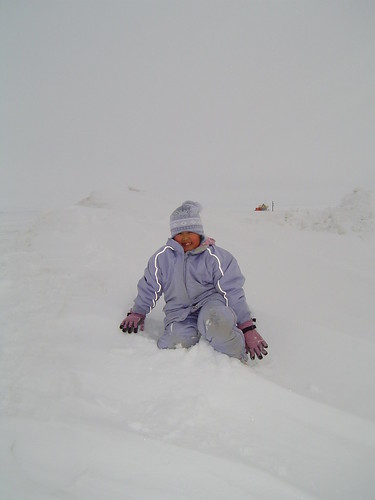
When the sun does break through, that's when real snow blindness may come into play. This photo has lots of shadow, so it doesn't fully depict the overwhelming brightness of sunlight splashing off snow...
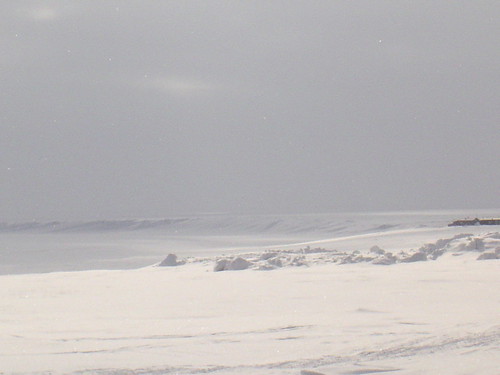
...but this little guy knows what it feels like and he goes out prepared.
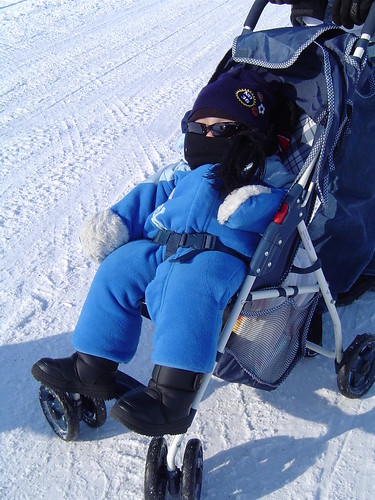
Of course, if he stays out too long, he'll soon be sporting a sunglasses tan like most of the goose hunters around the village.

It doesn't take many walks on days like these to understand the significance of contrast. An environment that is pristine and blemish-free may be pleasant, even beautiful. But the reality is that, without some exposed earth or looming obstacle on the horizon, the perfect sameness can be rather blinding. It is amazingly easy to lose perspective, lose balance, even lose the way. Bare spots and shadows are like markers that inform our journey. They help us focus in the right direction, make adjustments, make our way home.

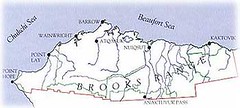



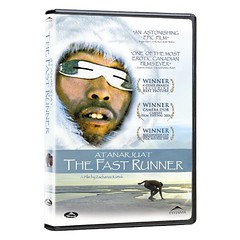
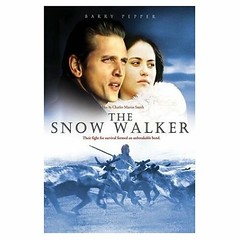
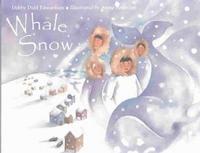
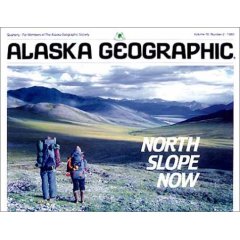
4 comments:
Polarized sunglasses, rather than tinted, make it much easier to see details in this kind of light.
Kim,
I have really enjoyed your blog. I knew where you lived was a lot different from much of the world, but seeing pictures brings a whole new light. People from the south just think of snow as cold and beautiful, not all the challenges and dangers it can cause in everyday life. You are a tough woman. I don't think I could live there.
Hi, Mongoose. You are absolutely right! I invested in a really good pair of polarized sunglasses last summer and it's made a world of difference. Thanks for the tip!
Hey, Lynn. I'm so glad you're finding the blog interesting. The realities of living here ARE somewhat different than I might have supposed while living in the South. I'm not sure how "tough" I am. It may be more a matter of flexibility. :)
Good to hear from you!
Post a Comment